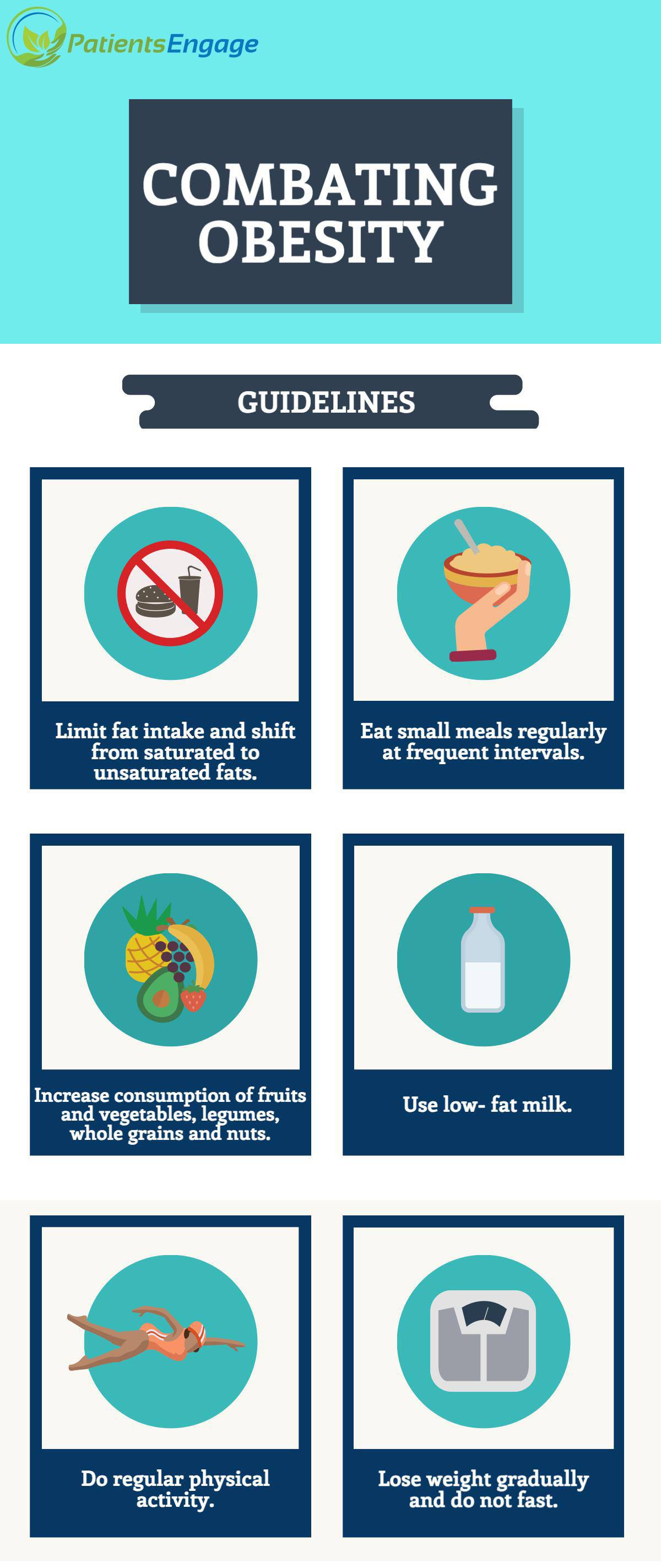
Obesity or being overweight is the causative factor for several chronic non-communicable diseases including heart disease, diabetes and certain types of cancers
- A dramatic increase in the prevalence of overweight and obesity among all the age groups has occurred in last 2-3 decades.
- About 30-50% of adult Indians are either overweight or obese.
- Overweight and obese individuals are at an enhanced risk of co-morbidities including type 2 diabetes, fatty liver disease, gallstones, high blood cholesterol and triglycerides, orthopedic disorders (Osteoarthritis), hypertension and other cardiovascular diseases, certain cancers and psycho-social problems.
- The imbalance between the energy intake and energy out put leads to excess accumulation of fat in various parts of the body.
How to reduce weight
There is no single regimen for weight reduction; it has to be individualized.
Weight reduction should be gradual. Weight reduction diets should not be less than 1000 Kcal/day and provide all nutrients.
Click here to read personal voices of people who have lost weight
For a sample diet download our ebook: How to lose weight without going hungry
A reduction of half a kilogram body weight per week is considered to be safe. Extreme approaches should be avoided and use of drugs may be dangerous. In children, obesity should be controlled by increasing physical activity rather than restricting food intake. Modifications in dietary habits have to be incorporated into one's lifestyle along with adequate exercise to keep the body weight within the normal limits.
As fat contains more than twice the calories (9Kcal) per gram compared to protein (4Kcal) and carbohydrate (4Kcal), weight reducing diets should limit the fat intake. Refined sugars (4Kcal) and alcohol (7Kcal) provide empty calories and should be avoided. Refined carbohydrates which promote fast absorption of glucose (Glycemic carbohydrates) also need to be restricted (Refer table below).
Plant foods that provide complex carbohydrates and fiber may be preferred as they reduce blood glucose, cholesterol and triglycerides. Weight-reducing diets must be rich in proteins and low in carbohydrates and fats. Consumption of plenty of fruits and vegetables would not only result in satiety but could also help to maintain adequate micronutrient intake.
Frequent fasting/semi-fasting (cyclic weight reduction) followed by adequate or excess food consumption will also aggravate the problem of weight gain. All reducing regimens should be monitored by a doctor and a dietitian.
GI Table
| Sl. No. | Name of the foods | Glycemic Index | Sl. No. | Name of the foods | Glycemic Index |
| 1 | White wheat bread | 75 ± 2 | 17 | Mango (raw) | 51 ± 5 |
| 2 | Whole wheat bread | 74 ± 2 | 18 | Watermelon (raw) | 76 ± 4 |
| 3 | Wheat roti | 62 ± 3 | 19 | Potato (boiled) | 78 ± 4 |
| 4 | Chappathi | 52 ± 4 | 20 | French fries (potato) | 63 ± 5 |
| 5 | White boiled rice | 73 ± 4 | 21 | Carrots (boiled) | 39 ± 4 |
| 6 | Brown boiled rice | 68 ± 4 | 22 | Milk (full fat) | 39 ± 3 |
| 7 | Barley | 28 ± 2 | 23 | Milk (skim) | 37 ± 4 |
| 8 | Instant oat porridge | 79 ± 3 | 24 | Ice cream | 51 ± 3 |
| 9 | Rice porridge /congee | 78 ± 9 | 25 | Chick peas | 28 ± 9 |
| 10 | Millet porridge | 67 ± 5 | 26 | Soya beans | 16 ± 1 |
| 11 | Sweet corn | 52 ± 5 | 27 | Lentils | 32 ± 5 |
| 12 | Cornflakes | 81 ± 6 | 28 | Chocolate | 40 ± 3 |
| 13 | Apple (raw) | 36 ± 2 | 29 | Popcorn | 65 ± 5 |
| 14 | Orange | 43 ± 3 | 30 | Soft drinks/soda | 59 ± 3 |
| 15 | Banana | 51 ± 3 | 31 | Honey | 61 ± 3 |
| 16 | Pineapple | 59 ± 8 | 32 | Glucose | 103 ± 3 |
11 weight reduction tips to consider
- Slow and steady reduction in body weight is advisable.
- Severe fasting may lead to health hazards.
- Achieve energy balance and appropriate weight for height.
- Encourage regular physical activity.
- Eat small meals regularly at frequent intervals.
- Cut down sugar, salt, fatty foods, refined foods, soft drinks and alcohol.
- Eat complex carbohydrates, low glycemic foods and fibre rich diets.
- Increase consumption of fruits and vegetables, legumes, whole grains and nuts.
- Limit fat intake and shift from saturated to unsaturated fats.
- Avoid trans-fatty rich foods (vanaspati, bakery products and sweets).
- Use low-fat milk

Download our popular E-book: How to lose weight without going hungry
This article is extracted from the Dietary Guidelines published by National Institute of Nutrition, India with their permission.






